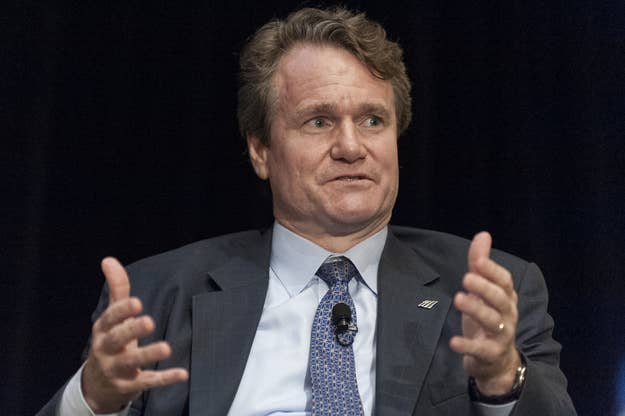
Bank of America has been in the dividend doghouse since 2009. It has payed only a penny a share to its common shareholders for four years while authorizing $5 billion of common stock buybacks and $5.5 billion in preferred stock redemptions last year.
The Charlotte-based bank's stock is up almost 15% to $17.68 this year and it booked an expectations-beating fourth quarter, but it performed poorly on the Federal Reserve's stress tests, an annual measure of how the country's largest banks could withstand an economic crisis comparable to 2008.
The results show that despite years spent to make itself safer and better capitalized, the country's second largest bank by assets is still viewed by regulators as most at risk of imperiling itself in an economic crisis.
While Bank of America was able to pass the minimum Tier 1 common capital threshold of 5%, its 5.9% ratio of its equity compared to its assets, weighed by how risky they are, was the lowest of its megabank peers. The capital ratio is also a measure of how much in losses a bank can withstand.
Bank of America also released the results of its own internally conducted stress test Thursday. It shows a large discrepancy between their projections and the Fed's — reporting a 8.6% minimum figure to the Fed's 5.9%. The largest gap between internal stress tests and the Fed's was Goldman Sachs, with 3.8%, while JPMorgan's figures were very close to those reported by the Fed.
Nomura analyst Steven Chubak said Bank of America's low number "leaves Bank of America with little room for error," and that it was most "at risk of having to use the mulligan" on its dividend buyback request from the Fed.
Despite the poor showing, and the biggest capital drop from its 2013 result of its megabank peers, Citi analyst Keith Horowitz said that the 6% showing, as originally reportd by the Fed, was "well above the 5% minimum requirement, which should still leave well-positioned to increase their capital return this year." Horowitz expects $5 billion in buybacks and a 3 cent-per-share dividend, but that Bank of America has the "least cushion" in getting the Fed to approve its buyback and dividend plans next week.
Bank of America's stock is down more than 1% in today's trading.
The bank has kept notably mum on its ask for the Fed in advance of the announcement next week, in contrast to some of its peers. While JPMorgan Chase chief financial officer Marianne Lake told analysts in its most recent earnings call that "we would like to have the flexibility to be able to potentially increase dividends and also have the flexibility to do reasonably repurchases" and that its ask would be "relatively consistent" with last year's, Bank of America executives have been tight-lipped.
During the bank's fourth quarter earnings call, Bank of America Chief Financial Officer Bruce Thompson was vague about the possibility of upping payouts to shareholders. "We did a good job of preparing ourselves for CCAR [the Fed's decision] this year," he said. "And we're obviously working hard as we go through the rest of the process between now and mid-March."
At a December conference, CEO Brian Moynihan said, "It's premature to say what we're going to ask for and stuff."
Last year, the Federal Reserve approved Bank of America's small dividend and buyback authorization, while rejecting only two banks, Ally and BB&T.
Citi, another troubled megabank, also only pays a penny a share in dividends and had $1.2 billion in buybacks last year, while JPMorgan pays 38 cents a quarter and has a $6 billion buyback program that many expect to be raised this year.
Three years ago, Bank of America's proposed dividend increase was rejected by the Fed, and while the bank said it would be able to get a higher dividend payment in the future, it's still at just 1 cent.
